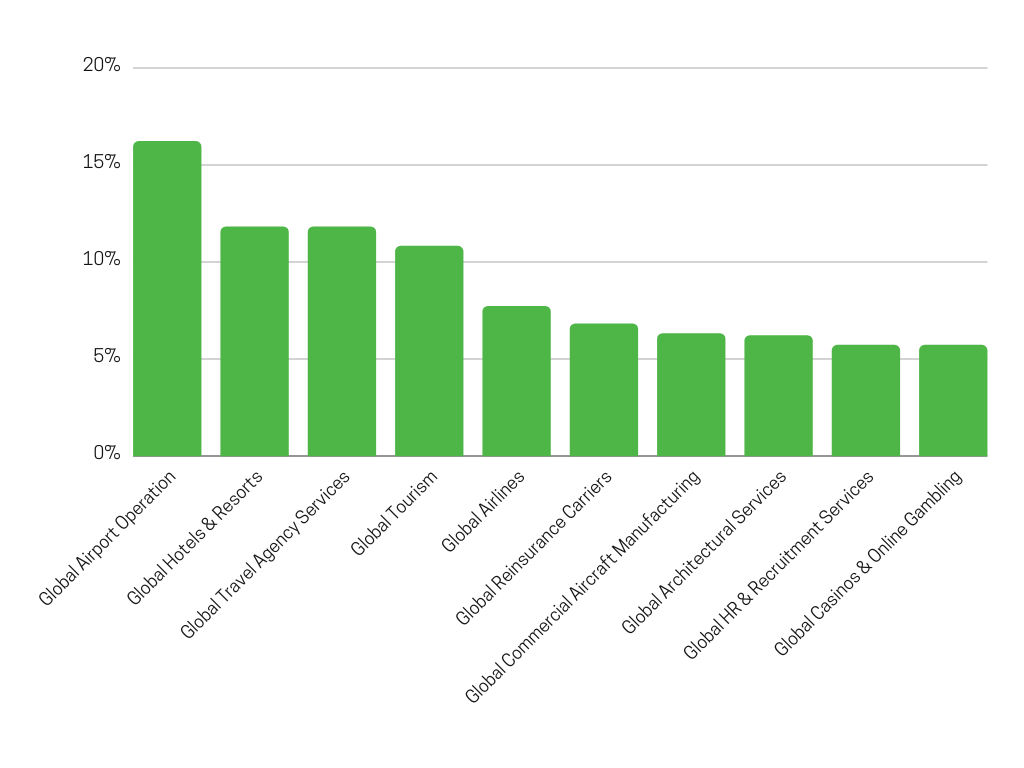Learn how to market yourself. At its core, marketing is about spreading ideas and building trust with the intended audience.
But many professionals find it tough to do. Not everyone’s great at spreading ideas or marketing themselves for various reasons. However, marketing yourself is easier when there’s a roadmap.
There are three critical aspects of marketing oneself. These are picking the right niche, branding, and building expertise. Do those things right, and you should succeed.
Considerations Before Jumping Into The Fray
There are differences between marketing yourself and a business. When marketing yourself, you must be thoughtful because everything you do will follow you for the rest of your life.
It’s not like marketing a business where you can shut down the company and start over if a problem arises. Of course, reputation matters in both circumstances, but one is more recoverable.
Additionally, you must know your stuff and be ok with putting yourself out there. Unlike a business, potential customers will want to see you at the front line representing your brand. This can be done through various means. For example, you’re publishing weekly newsletters, podcast guest appearances, etc.
Choose mediums that you excel at. For example, some people do well on cameras; others prefer writing.
Now let’s go over how to market yourself.
1. Choose a Niche or Area Of Expertise
Identifying and narrowing down your niche is essential to effective self-marketing. But you have to do it right.
Ideally, you should look for underserved areas in the market and then, for each niche, determine if it’s big enough. How many people are looking for that specific product or service?
You can use research data tools like Google Trends to understand how popular a niche is online.
Google Trends will show you the popularity of a search term. That’s useful because these days, whatever people are looking for online is often a good bet. But the number of searches should be significant.

Also, if you’ll serve people locally, research the given location. A search term may be popular in one region and not even searched for in another.
Another way is to find information online about specific industries. For example, researchers forecast eCommerce revenue will reach 1,705 billion dollars in the United States by 2027 (currently at 1,111 billion).
IBISWorld lists Global Airport Operations (16.2% growth rate), Global Hotels & Resorts (11.8%), and Global Travel Agency Services (11.8%) as the fastest-growing industries this year.

Here are some additional tips to consider.
- Identify your interests and passions. What topics do you enjoy talking about? What activities do you like to do? Consider what makes you unique to find potential niches.
- Think about what solutions people might need and how your skills or knowledge could help. What problems can you solve?
- Look at what other people are doing in the same space and see if there’s an opportunity for something different or better. However, while it’s good to acknowledge you have competition, don’t make their actions determine all of yours. There are benefits in looking at others – it can help innovation and keep you competitive, for example. But sometimes, it’s better to ignore the competition and forge your path. Essentially, balance seeing what others are doing and your objectives and innovations.
- Determine the profitability of your niche. Research the potential market size, customer demographics, and pricing models to understand how much money is in the space.
- Narrow your niche further if necessary. This is useful when there’s too much competition in one area.
2. Brand Yourself
This can’t be a proper article about how to market yourself if it doesn’t discuss branding.
Branding is the strategic and creative process of developing unique identities. This can be for a person, business, product, or service.
The ultimate goal of branding is to create differentiation from similar offerings in the market – a memorable difference. That difference should show in everything, including the following.
- Visuals (logo, videos, colors, etc.).
- Messaging (slogans, emails, website copy, etc.).
- The customer experience (design, channel presence).
- The overall brand strategy (objectives, positioning, etc.).
By creating an effective brand identity, you can better reach and convince your target audience to engage and become customers.
Branding can help you with the following.
- Create a standout online presence.
- Showcase your skills, products, or services in a way that passes the eyeball test (instills a sense of trust or resonates with the target audience).
- Increase recognition or make you more memorable.
- Secure professional growth opportunities more easily.
- Remain focused on your career goals.
- Connect with your audience meaningfully and form lasting relationships.
Misconceptions About Branding
A lot of people misconstrued what branding means.
Sure, it involves creating marketing assets and implementing several tactics – but that’s only a small part of branding. This is important to know if you want to learn how to market yourself truly.
Here are some common (and not-so-common) misconceptions about branding.
- Branding is a logo: You probably heard this one before. But, while a logo is an essential component of brand identity, it’s not branding itself.
- Branding is marketing: Effective marketing is vital, but not branding. Great branding requires careful consideration of all the relevant factors. For example, your choice of words in messages, design choice, style, etc., should form a cohesive whole; how you show up and your impression on the people that engage with your brand matters.
- Brand consistency isn’t important: Having consistent messaging and visuals across all channels where you promote your brand creates recognition among potential customers or clients. Everything should look and sound like it came from the same person or brand.
- You need catchy slogans or taglines to be successful: While clever slogans and taglines can help, they aren’t always necessary. Instead, your focus should be on providing memorable experiences.
- Branded merchandise automatically boosts sales or conversions: These things are great to have, but they will only make an impact with additional effort from you. The best approach is using branded items with cohesive branding and targeted marketing campaigns.
- Branding is only for big companies: The company size doesn’t matter. Solopreneurs, startups, and small businesses can benefit from creating a strong brand identity. Using the same principles of branding that larger firms use can improve your outcomes.
- Design elements have no impact on branding: It does, as noted earlier. All the visuals associated with your company’s logo, website, product packaging, and other marketing materials are as important as the text used.
- Big-name celebrities will attract more attention to your brand: Hiring a huge star to promote your offerings may be helpful, but this isn’t always true. Sometimes, hiring smaller influencers serving the target demographic is better. That’s because these people will likely better click with the target audience (become liked more quickly).
- Branding is a one-time thing: Maintaining your brand identity requires ongoing effort because trends change and consumer interests evolve. So keep up with your branding to remain effective, such as refreshing your logo and messaging when necessary.
- Branding doesn’t require creativity: Developing visuals and copy that works with the target audience requires creativity, planning, and attention to detail. That’s how you get your message across strong enough to impact the bottom line.
How to Brand Yourself
Maybe this article should have been called how to brand yourself instead of how to market yourself. That’s because branding is vital and encompasses many things in marketing.
You need to do several things to brand yourself, but the main ones are as follows.
- Define your unique identity and values: Consider your purpose for being in the field, what people can expect from you, and why they should care. Can you infuse some of your personality into the brand? Or will you create a unique brand personality? What values do you care about the most?
- Identify your target audience: Who is your customer? Who are you creating content for, and why will they appreciate your message? Questions like these will help you understand your target customers’ needs and interests through research. Additionally, figure out where this audience hangs out, so you can easily reach out. Make a list as you discover platforms, events, etc., during research.
- Develop a mission statement that reflects your purpose: A mission statement conveys what you are trying to achieve. For example, it could be something simple like, “my mission is to provide engaging and impactful content that helps my clients connect with their audiences.” Consider why you’re in your field of business and the people you want to help to find the mission.
- Establish an online presence (website, blog, social media profiles, etc.): Your online presence is crucial for ensuring customers can find you. Be sure to put up relevant information highlighting your work, including resources that can attract potential customers.
- Create and decide on the visual elements representing your brand: Think about brand-specific texts, colors, etc., that you can use across channels and marketing materials. No matter where potential customers may find your brand, they should recognize it immediately.
- Create content related to your niche or field of expertise: This will help people learn more about you and become familiar with your work. For example, writing blog posts, publishing an eBook, case studies, etc., are all good content options.
- Choose your ideal promotion strategies: Consider your strengths and pick one or two marketing strategies that you can be consistent with – easier to be consistent when you have the right skills or like something. For example, social media marketing may be a good choice if you spend hours daily on such platforms.
- Develop an excellent customer service process: Your customer service process should allow you to serve clients fast, such as responding promptly to inquiries and feedback. While it’s tempting to ignore this initially, it may become challenging when you receive more attention from potential customers.
All of the above information will also lend to your brand story. This is the narrative that outlines the values and purpose of a brand. It communicates the deeper meaning behind your services or products, creating an emotional connection with customers.
A great example is the Louis Vuitton brand story. If able, take a moment to read it, and you’ll see how powerful a brand story can be for marketing purposes.
However, keep in mind that it’s normal not to have a brand story when you first start. Most people need time to decide what to share and how to do it. So you may want to focus on everything else for now.
3. Commit to Becoming An Expert
Becoming an expert is a powerful way to position yourself in the market.
An expert is an exceptional performer and highly knowledgeable in their field. They are also very informed about their industry.
And becoming an expert is relatively straightforward – you need to build authority. That means becoming the go-to person for one or more topics in your industry.
When you start doing that, everything else should fall into place. You’ll learn more about your work, attract the right people, etc. But it won’t happen overnight.
It takes work, and you must commit to the process.
Here are tips to help you start building authority.
- If applicable, get certified in your field. Some industries require certifications, such as plumbing or HVAC. And many customers are looking for certified experts in such niches.
- Reach out to the media and see if there’s an opportunity to be a knowledgeable source on related topics. You can use services like HARO (Help A Reporter Out).
- Create content that showcases your expertise. For example, you can start a blog, podcast, or YouTube channel.
- Join relevant associations or organizations related to the field.
- Stay up-to-date with industry trends, advancements, and news within your niche. For example, you can read industry publications.
- Commit to forever improving your skills and knowledge.
Note that these are not things you should do once. Instead, whatever tactics you choose should be ongoing and consistent to a reasonable degree.
4. Draft Your Marketing Plan
A marketing plan outlines the steps you need to take to promote and market your business, product, or service. Your objectives and purpose should drive it.
Great marketing plans include the following.
- The analysis of the current situation and target audience demographics.
- The strategies for reaching and engaging with the target audience – and tactics for executing those strategies. Think of strategies as the specific intent (what needs to happen and why) and tactics as what puts the intent into action (the individual steps to get there).
- The outline of the type of message to share and the channels to use.
- The budgets and timelines for each action item.
- The performance metrics to track progress.
Some effective marketing strategies to consider including in your plan are as follows.
Search Engine Optimization (SEO)
This is the process of optimizing a website and its content to increase visibility on search engine results pages (SERP).
There are many SEO tactics, but going over them all will be beyond the scope of this article. So let’s briefly review some of the most common SEO tactics.
Side note: A complete resource covering every SEO tactic imaginable is in the works. If you’d like a notification when published, subscribe here.
Content Creation
This involves researching and analyzing the content already ranking well for the target term, developing original content, and optimizing it.
And while inserting the right keywords is essential, optimization is more than that alone. The content needs to work for the target audience as well. So, for example, the voice and style should fit the intended audience. Similarly, the content outline must make sense and flow perfectly.
Optimize the Website Navigation and Load Speed
The website navigation and load speed directly impact user experience. No one likes a slow website or one where they cannot find things.
For an optimal user experience, your website should be easy to navigate and load quickly.
The best way to handle site speed is by getting fast web hosting from places like Tech Help Canada or Bluehost. As for the navigation, ensure users can easily find everything on the website.
Build Backlinks
Backlinks refer to links from one website to another, and this is an important search engine ranking factor.
The more links you have, the more valuable your site is perceived by search engines. As a result, acquiring backlinks can boost your search engine rankings.
While link building strategies are out of scope for this post, you can read this guide for more information about backlinks. Many of the tactics shared there are still relevant today.
Local SEO
As the name suggests, this means optimizing your website to rank for local terms on search engines. It involves submitting your site to directories like Yelp and optimizing your business listings on Google My Business, Bing Places, and other relevant search engines.
The most important aspect of local SEO is NAP (name, address, and phone number) consistency across the web.
Generate A Sitemap
An XML sitemap provides search engine crawlers with information about all of the pages on a website, allowing them to find things more easily.
You can generate a sitemap by using a tool, manually, or automatically using a content management system (CMS) like WordPress.
With a CMS, there’s no action required on your part to generate the sitemap. As far as tools go, you can use XML-sitemaps.com or learn to code it manually.
Also, you can store the sitemap in the root directory (better) or somewhere else. Be sure to tell search engines where it is by specifying the URL in the robots.txt file or linking to it from your homepage.
Landing Page Optimization
A landing page is a webpage designed to capture leads or convince prospects to convert (become customers, subscribe to a newsletter, etc.).
Landing page optimization aims to increase conversion rates by optimizing the user experience and encouraging consumers to take action.
That means ensuring everything flows correctly and testing different landing page elements to make them as effective as possible – such as headline, imagery, copy, call-to-action (CTA), etc.
Search Engine Marketing (SEM)
SEM is paid online advertising on search engines like Google and Bing to promote products and services. Consumer targeting for these ads can be very precise since you’re primarily using search terms.
Here are some of the most common SEM ad types.
Pay-Per-Click (PPC) Advertising
With this ad model, you pay for ads appearing on search engine results pages. However, you only pay for actual link clicks, not impressions.
Advertisers bid for placement in search engine results and other websites. Ads are then displayed when users search for related or exact targeted terms.
For example, assuming your target keyword is ‘accounting services.’ Your ad would show up for that exact term and related keywords. But you have the option to target the exact keywords only.
PPC is one of the best ways to quickly target specific audiences and generate qualified leads. But it’s not in the budget for everyone. Keywords can reach upwards of $30+ per click.
Display Advertising
Display ads are video or image-based ads that appear on other websites and apps in the search engine’s network. You can typically pay by CPC (cost per click) or CPM (cost per thousand impressions).
And like PPC ads, you can target specific user demographics or interests to reach a highly relevant audience.
Retargeting Campaigns
Retargeting campaigns involve targeting users who have visited your website (or other web property) – but haven’t become customers or converted.
Ads are served to the target audience as they browse the web. For example, visiting a brand’s website and seeing their ads on other sites you visit.
Retargeting is a good way to remain top-of-mind with potential customers and bring them back to your website. Brands typically use retargeting with other marketing campaigns.
Social Media Marketing
This form of digital marketing involves leveraging social media channels to promote your offerings, using organic and paid strategies.
Some of the most common tactics include the following.
Build a Social Media Content Strategy
Think about your goals. What do you want to achieve through social media? Then plan out the types of content you’ll share, the frequency, and the channels to use.
That will help you stay focused and remain on track toward achieving the impact desired.
For some content ideas, investigate what others are doing in your industry. What’s working?
Each social network will be different in that regard. So, for example, what works on Facebook may perform poorly on Instagram and vice versa.
Engage With Other Users
Replying to comments, liking posts, following other accounts, etc., can help you build new relationships. It can also help you gain valuable insights into customer needs and preferences and increase brand awareness.
Use Paid Social Media Promotion
Most social platforms today have reduced organic reach, especially Facebook. This is likely to encourage advertising spend.
Nonetheless, consider using paid promotions (ads, boosted posts, etc.) to reach larger audiences and increase engagement – when it makes sense.
Think about the objective and whether it’s achievable through social media. Ask yourself important questions to help you make a great decision, such as can you sell the product or service on this platform?
In general, social media ads are helpful when the goal is to promote a specific offer or build an email list.
For example, a B2C eCommerce brand can sell products on Facebook or Pinterest. Similarly, a freelancer may find success in driving traffic to their lead magnet landing page to capture email addresses.
Leverage Influencer Marketing
Working with influencers that serve the same target audience can drive the traffic you need to grow.
For example, you could contact someone to collaborate on a webinar series. Similarly, you can have someone create content for their followers that promotes your brand.
Look for influencers that share your brand values and understand the target audience for the best results.
Get Help As Needed
Figuring out how to promote yourself online can be tricky. But the effort you put into building your brand will be worth it.
There are no quick fixes. It takes hard work and dedication to brand yourself and become an expert in your industry. So be patient and do the work.
Consider the digital marketing strategies and tactics shared here and pick the ones that will work best for you. Each method has its advantages and drawbacks depending on the use cases, so weigh them carefully.
Then create a plan for marketing yourself and stick to it, only tweaking things when necessary.
In general, the best type of marketing for personal brands or solopreneurs is organic. That’s because it’s not budget-heavy and you can do many things yourself.
Tech Help Canada is a digital services company and community that helps online businesses, from solopreneurs to small business owners. Our services include copywriting, SEO, website design, and Internet hosting, among others. Book a call today.

I’m a freelance copywriter and SEO specialist. I aim to empower individuals and businesses with impactful marketing solutions and insights. In my downtime, I recharge by embracing the beauty of nature or cherishing moments with my loved ones. If you found value in this post, please consider sharing it.
Want a heads-up once a week whenever a new article drops?







